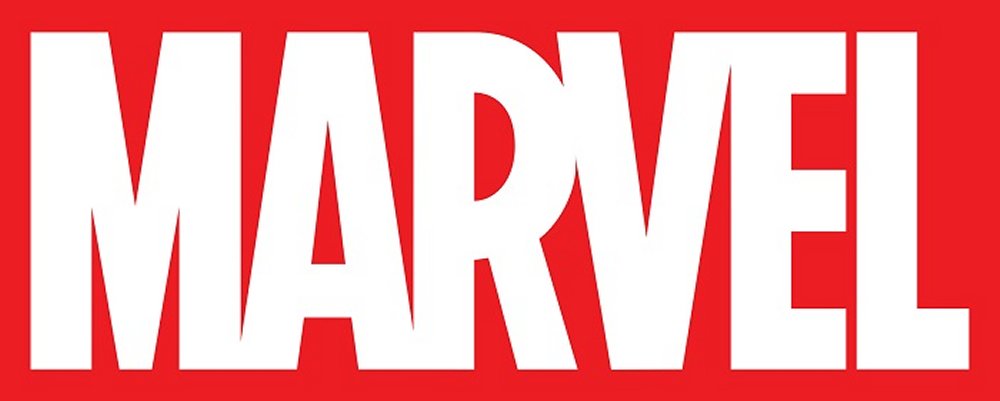When did Marvel turn from that geeky collection of magazines from comic books into a worldwide superhero brand? In recent years, you’d say, after the public began to respond to Spider-Man, Iron Man, Captain America and others. Marvel’s history gave clues that it had a seat in the front row of branding stardom.
If you’re already a fan or collector, you might now some marvelous facts about this brand’s evolution. In this article we’ll analyze 10 surprising changes and initiatives of Marvel superhero brand.

1. Marvel’s logo adjusted to 2 name changes
If you look at the history of Marvel logos, you’ll notice that back in 1939 it was far from what it is now. The brand was so far from nowadays that if featured an entirely different name. Marvel logos was founded as Timely Comics.
In 1950, it fully rebranded and became Atlas. It was only 7 years later that the brand became Marvel Comics and featured a logo with a black circle on a red background. Four versions later, the logo became what it is today.
2. Nick Fury has gone through major changes
The brand has disrupted user experience several times. The most significant of them was in a character from a famous TV series. Nick Fury: Agent of S.H.I.E.L.D. featured a lead character recently played by Samuel L. Jackson.
However, the character was first played by David Hasselhoff in the `90. Since then, Nick Fury changed both his look and his race. This is not the only disruption in Marvel characters, but the most obvious one.
3. An insight on the character’s lives was eventually released
Marvel released a comics series with more stories and less violence, to provide fans with an insight on its characters. This was named Ultimate Comics and was published between 2000 and 2015. The series included origin stories for Spider-Man, the Avengers, X-Men and the Fantastic Four.
When you have a loyal fan base, you need to provide them with additional and exclusive information on your main products. These were the superheroes and the imprint series featured facts that made them more human.
4. Marketing doesn’t need to have real life results
When the Avengers: Age of Ultron was released, Marvel teamed up with Gillette for a marketing campaign. The initiative seemed to be for collectors. Instead, it was aimed to connect reality to the superhero atmosphere.
Gillette announced a reconstructed product, based on the Avengers technology. However, the product was never available. Its super-soldier technology was entirely fictional, and it worked.
5. Marketing can have real life results
Partnerships with brands from other categories are always welcomed. Moreover, they can boost a product if both brand benefit from the other one’s inheritance and visibility. Under Armour features a collection of superhero-inspired clothing, which resembles Iron Man’s outfit in the Avengers series.
These products are available for the public and connect the superhero atmosphere to reality. The marketing campaigns are backed-up by product placement in movies.
6. Inside tips are always fun
Occasionally, Marvel decides to show more of its culture through those in charge of its content. In 2016, editor-in-chief Axel Alonso decided to give an interview to its own branding team and promote a new comics tagline: Divided We Stand.
You can promote your culture from the inside of your own company. Marvel did it and it looked as a teaser to the upcoming issue of Marvel Now! magazine.
7. Products can play
Did you know that Iron Man’s equipment used to include roller skates or built-in jet assisted roller wheels? This did not stop the character to turn into a man with attitude, some irony and a bit of controversy, when the movie was released.
Even though the roller skates are now long gone, they still generate questions and discussions among fans of the comic series. You can play with your products and change their features. Loyal fans will notice and enjoy the changes.
8. Batman is conservative
This is no news. However, regardless of the comic series, movies or collectibles, Batman never ages. He is always 34 and looks the same, like any superhero is expected to. Hence, the public of Batman movies seem to mostly consist of teenagers and young adults, instead of children.
Keeping a product conservative will attract new fans, while keeping the old ones there. Loyal fans of Batman have grown, but they are still curious. They should be as such, as the character doesn’t seem to stop too soon.
9. Evolution does not mean rebranding
In 2009, Walt Disney Co. purchased Marvel Entertainment. However, the brand kept its consistency and didn’t reflect the acquisition in its logo, movies, taglines and others. Marvel continued to be successful, while the sales of Walt Disney Co. rose over 22% in 2015.
Disney also acquired Pixar shortly after the above. This brand also kept its specific and had more occasions to impress its public and gain a new one.
10. How about breaking patterns?
Imagine creating a product which breaks the patterns a brand relies on and impress? Marvel did so with the Ant Man, which was not the worst movie the company ever made. Ant Man is courtesy of MCU (Marvel Cinematic Universe) and has Paul Rudd as a lead character.
The movie has 73/10 IMDb stars and constantly rising popularity. Braking patterns involves risk. Consequently, it can lead to profit, even if it doesn’t come from your loyal public.
Marvelous Wrap Up
The Marvel brand has over 75 years of activity and doesn’t cease to impress. Some critics say that fans might get bored of those 2 – 3 superhero movies per year. Others claim that even potential audience is annoyed by so many superheroes on posters. Meanwhile, Marvel movies become blockbusters.
A brand’s history can be impressive, like Marvel’s is. Marketers can learn from it, while fans can enjoy the details. When it comes to the superhero brand, history is still in writing.
